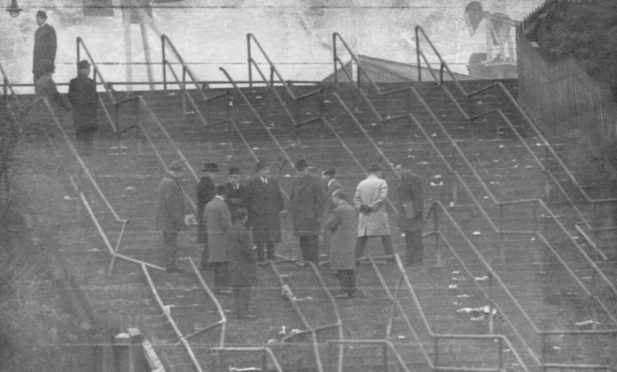
It was dark and foggy, deep in a Glasgow winter on January 2, 1971. For many of the families whose loved ones had gone to the Old Firm derby, the fog has never cleared, the darkness never lifted.
They will face each other again on Saturday to play out the latest chapter in the age-old rivalry between the biggest two clubs in Scotland’s biggest city.
When Rangers and Celtic come together at Ibrox, the hard-fought match will be coloured by memories of what happened there exactly 50 years before when 66 fans died in a crush as they left the ground.
That common bond of loss, grief and unity inspired by the Ibrox Disaster on January 2, 1971 is shared by the Old Firm and the whole of Scotland, and by everyone who has ever been to a match.
“For a lot of people leaving the game, the vast majority would have no concept of what they had left behind,” said David Mason, Rangers’ official historian. “For the families, when you hear of fatalities at a game, all sorts of ideas run through your mind.
“Families across the country were gathered on the streets, waiting for the supporters’ buses to return, desperately hoping to see their family member step off the bus. I was chatting with Walter Smith’s son, Neil, who told me his dad went to the game on the bus from Carmyle and the families were waiting on the bus coming back.”
The game, watched by an estimated crowd of 85,000, ended in a 1-1 draw, with Celtic’s Jimmy Johnstone scoring in the last minute only for Colin Stein to equalise for Rangers seconds later. As Rangers fans streamed out of the stadium, happy to have seen their team salvage a draw from what looked like certain defeat, an accident occurred on Stairway 13, the steep stairwell closest to the subway station and supporters’ buses.
“We will never know what caused it,” David said. “An eyewitness said he saw a guy on someone’s shoulders and then he went down, but we don’t know if it was the guy falling that caused it or if he tripped because someone had gone down in front of him. I’d been on that staircase in the past and saw people lose their shoe and try to reach down to retrieve it – even something as simple as that could have precipitated the accident.”
There had been incidents on the stairway before – in 1961 two fans died, and in both 1967 and 1969 a number were injured. David said: “It’s the exit I always used. It was popular because it was where the buses, the subway and most of the cars were located. It always gave a little concern, but inevitably in big crowds, no matter the stadium, there was a lot of crushing and the exits would be busy. I could visualise it all, I could almost take myself there but thankfully I wasn’t there.”
One theory which can be thrown out is that the accident occurred as exiting fans tried to turn back upon hearing Rangers equalise. That was dismissed at the fatal accident inquiry held the following month.
“People have held on to that, because it’s what they understood,” David said. “But it was unrelated. I think for a long time Colin Stein believed his goal had precipitated it, but the fatal accident inquiry clearly demonstrated that wasn’t the case, so that should be laid to rest. It had no consequence on it.”
As fate would have it, Stein had met the only female victim, Margaret Ferguson, just a short time before. “A few weeks earlier, Colin’s wife had given birth and Margaret had gone to his house with a present for the baby, so there was a personal touch to it as well,” said David.
While the historian points out the bereaved were always the primary concern and focus, there can be no discounting the impact the disaster had on the players and staff. As the teams washed and changed after the match, those who remained were asked to leave as the dressing rooms became makeshift casualty wards. For the fans who could not be saved, their covered bodies were laid out on the pitch. In the days afterwards, Rangers manager Willie Waddell ensured his players were in attendance at each of the funerals and visited fans in hospital.
“I have spoken to a lot of the players over the years and they have carried that scar with them,” David said. “There is always a sombre look that comes across their faces – it really did strike the players very hard. A lot of these young boys – Derek Parlane and Derek Johnstone were only 17 at the time – had probably never attended a funeral before and then they were put in a situation where all eyes were on them.
“I think, in hindsight, if that occurred now, there would be a lot of concern shown to make sure these boys went through some sort of counselling, but there was no counselling back then.”
From the night of the tragedy to the weeks and months afterwards, Willie Waddell stood as figurehead for the club and instigated the stadium redevelopment that would eventually see Ibrox become an all-seater stadium.
“The club embarked on a programme to make sure it never happened again and all credit to Willie Waddell for driving that,” David said. “He was a leader, so it was second nature to him. Not many managers in today’s football world would step in front of a press conference, with that kind of backdrop, the way he did.
“Willie Waddell said we can’t have this anymore, where people come to the ground and aren’t safe in this sort of environment. So the stadium itself is the edifice that commemorated the fans. To ensure nothing like that would happen again, to make sure the fans could come to the ground and be entirely safe, is the legacy to what happened.”
Coronavirus restrictions mean there can be no public ceremony at the stadium to mark the anniversary, but David says the fans themselves ensure absent friends are never forgotten.
“I know the club is putting forward a memorial, not just dedicated to the 1971 disaster, but to the 1902 disaster and as a place of commemoration for people who have been lost,” David added. “Besides that, the fans themselves still remember that day vividly and carry their own memorials out in different ways.
“Over the years, the fans have set themselves up in groups to tend graves and provide other memorials, like benches with plaques, so the supporters have been great. All sorts of things like that have taken place and still do. The people lost have certainly not been forgotten, and there is a great responsibility on the club and the likes of me to make sure the message gets out there that they never will be forgotten.”
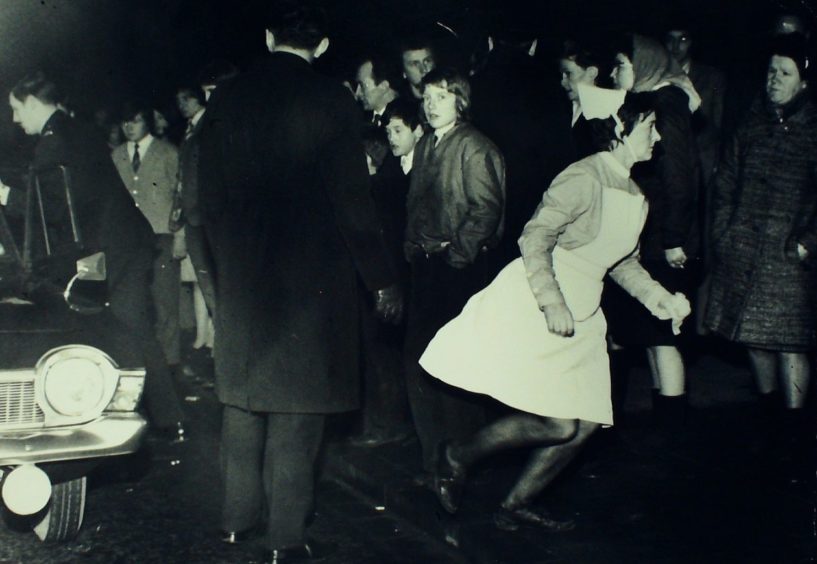
A famous picture taken by The Sunday Post on the night of the Ibrox Disaster captured the tragedy as it unfolded.
The image of a nurse from Glasgow’s Royal Infirmary dashing from a car at the stadium’s main entrance and rushing inside appeared in The Post’s coverage of the disaster the morning after. The following Sunday, a report noted the picture had gone round the world.
“It was front page in papers across the United States,” the report stated. “One picture agency sent it to 60 newspapers in places as far apart as Paris and Tokyo. Another broadcast the picture to Europe, Japan, Australia and South America.”
Almost six years ago, a petition was set up calling for a statue to be built in Glasgow’s George Square using the image of the running nurse, to recognise the service and efforts of the city’s health and emergency workers and all they do each and every day.
They just looked like they were sleeping
Former sports reporter Bob Paterson, now 79, was working for The Sunday Post at Ibrox as the tragedy unfolded.
Each year when the anniversary approaches I can’t help but remember that awful night with crystal clarity.
I was working for The Sunday Post, doing reports for the sports paper, The Sporting Post, and when Colin Stein’s equaliser went in I thought that was it, and took off down the twisting metal staircase from the press box to the main entrance of Ibrox, at the reception area.
I’d been there for about 10 minutes when I heard someone say: “That’s three.” There was a bit of an eerie atmosphere and people were running around aimlessly.
The front doors were locked and the police officer in charge asked me who I was.
“You’re not Sunday Post now, you’re with me,” he growled.
I took my jacket off and rolled up my sleeves. I went down to the pitch and clambered up Passageway 13 opposite where it happened. It was like a scene from an apocalyptic movie.
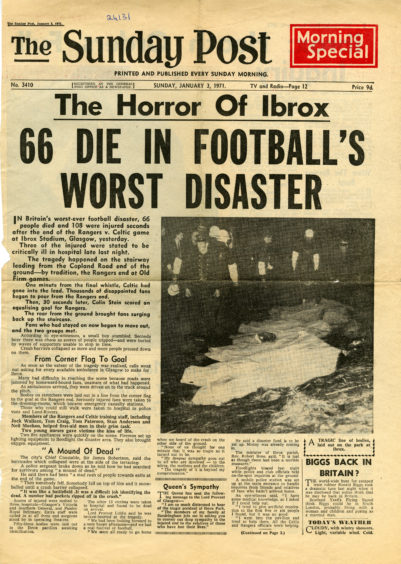
The metal barricades were buckled. It had quite simply been a domino effect. I was thrown into the thick of it, helping stretcher the bodies. We carried them across the field and left them on the track at the south stand.
The stretchers were lined up the way hospitals lined up gurneys; I could see they were putting shrouds over them. Another reporter said I was lucky to be there. I wanted to lay one on his chin. When I got back to the office my boss told me to go to the pub and have a couple of drams, as if I hadn’t had any already.
For my efforts that night I was given a bottle of whisky and £25 as a bonus for going above and beyond. I had two days off because I was suffering from shock without realising it. That night feels as though it was last week and I can describe people on the stretchers vividly. They just looked like they were sleeping.

Enjoy the convenience of having The Sunday Post delivered as a digital ePaper straight to your smartphone, tablet or computer.
Subscribe for only £5.49 a month and enjoy all the benefits of the printed paper as a digital replica.
Subscribe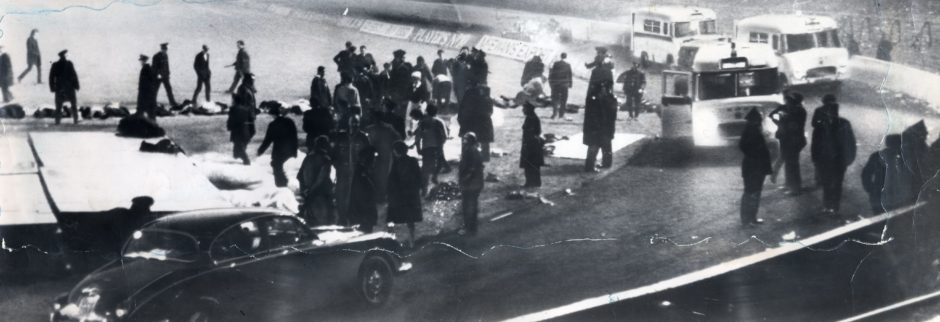 © ANL/Shutterstock
© ANL/Shutterstock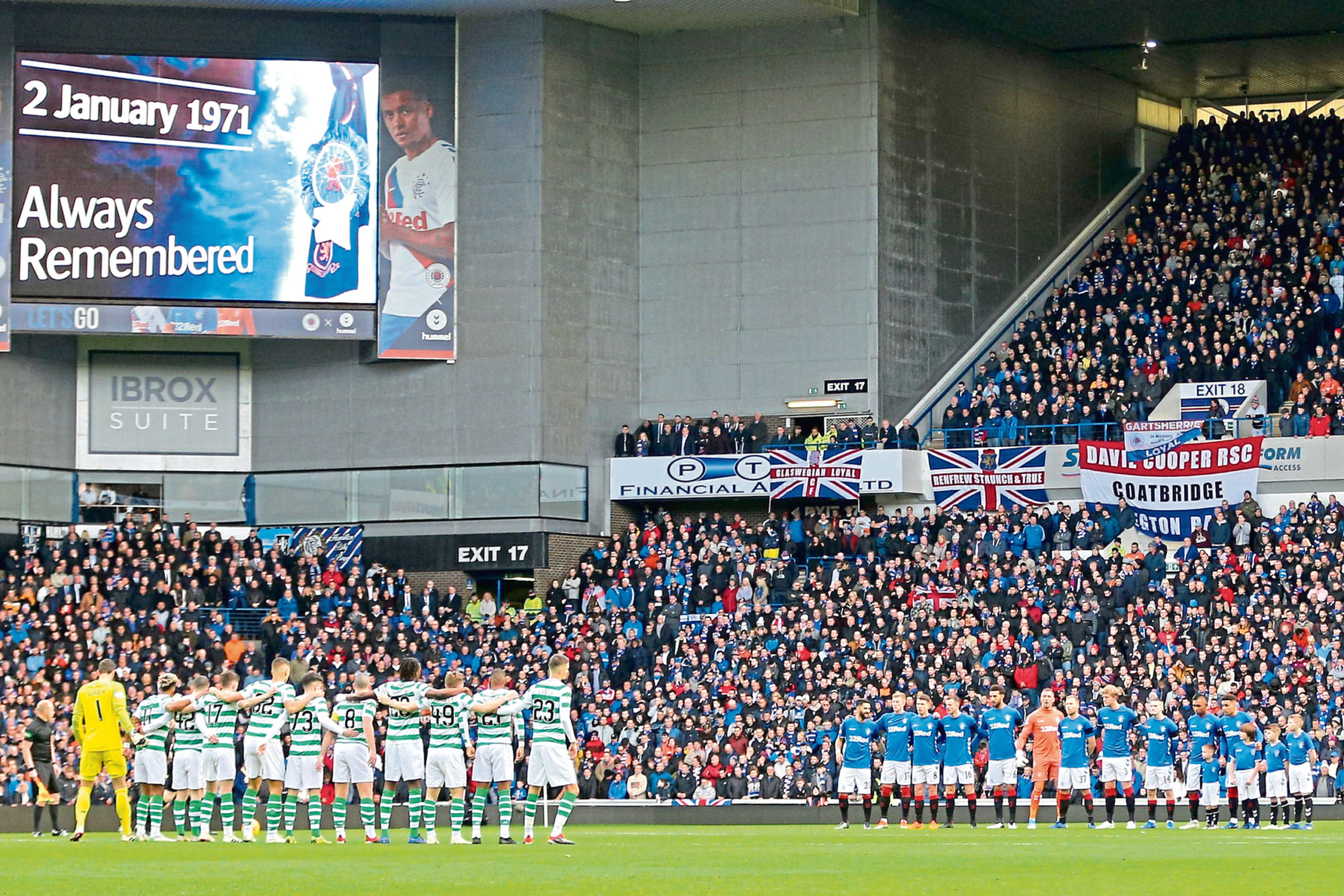 © Phil Duncan/ProSports/Shuttersto
© Phil Duncan/ProSports/Shuttersto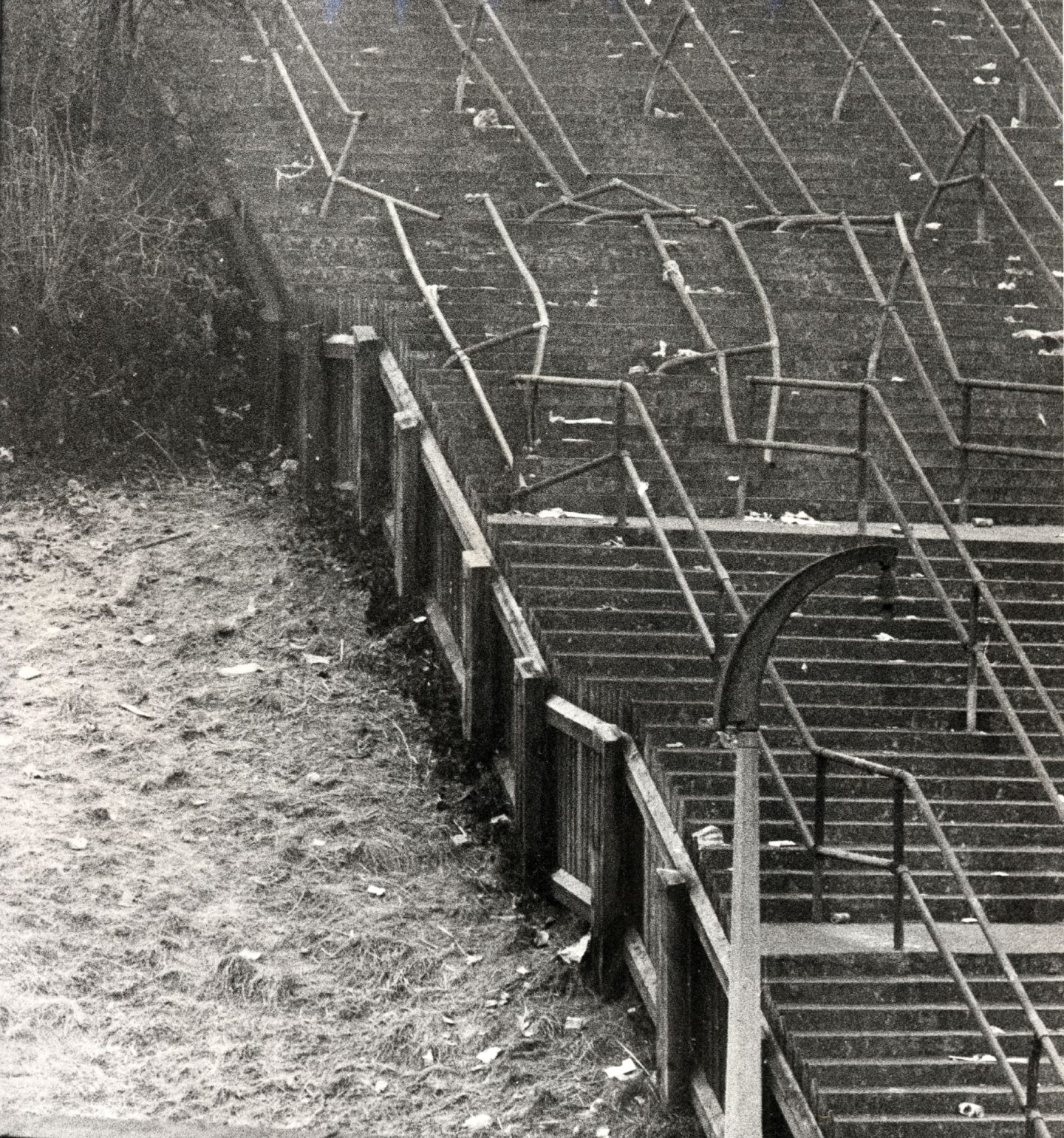 © Daily Mail/Shutterstock
© Daily Mail/Shutterstock